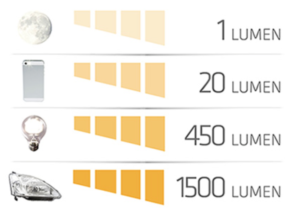 When you’re shopping for anything LED related, you can easily get overwhelmed by the different terminology of LED products. Today I’m going to go over the difference between Lumen and Lux, and what you should look for when making your purchase.
When you’re shopping for anything LED related, you can easily get overwhelmed by the different terminology of LED products. Today I’m going to go over the difference between Lumen and Lux, and what you should look for when making your purchase.
Lumens (LM) are a measurement unit, which tells you what the total amount of light emitted from a light source. You can say that the more Lumens the brighter the light.
When compare our products, we use Lumens to see the total amount of light output, but lumens will only show us a part of the picture. Producing and creating a perfect beam pattern does not reveal enough information to show how the light output is created.
Lux is a unit of light measurement where the area is also taken into account. The higher the lux, the more bright it is at a certain distance. 1 lux is equivalent to 1 Lumen/m2. This calculates the light intensity in a specific area.
Lux is used to measure the amount of light output in a given area – one lux is equal to one lumen per square meter. It enables us to measure the total “amount” of visible light present and the intensity of the illumination on a surface.
We use lux because it is a precise measurement for figuring out the brightness of a beam. If the light output is focused on a small area, we see this as very bright light. If the light output is diffused over a greater area, we see this as a weaker dimmer light.
It’s important when purchasing LED lighting to ensure that it would be bright enough for daily use. The CIBSE recommends office lighting to be at least 500 lux, while restaurants and bedrooms are recommended at 50-150 lux.
We recommend you check product specs and research on the lighting to be sure that the product suits your needs.

Leave A Comment